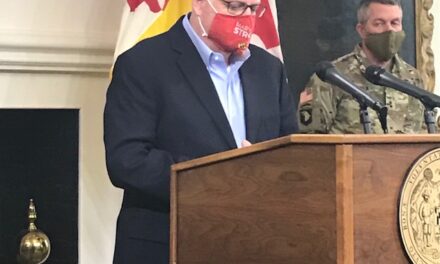By Megan Poinski
Megan@MarylandReporter.com
There were so many opportunities for fraud and misuse of money by workers in the Baltimore region of the state prison system that state auditors are asking the attorney general to look into possible criminal charges.
Auditors found an “almost complete lack of control and accountability” for the corrections region’s working funds, uncovering included thousands of dollars in penalties for bounced checks, checking accounts out of balance by hundreds of thousands of dollars, and checks machine-signed by people who no longer worked at the department.
Auditors found many opportunities for money to be stolen and misused, and said a lot of wrongdoing could have occurred.
Recurring problems
“You name it, it is in here,” Legislative Auditor Bruce Myers said about the report released Friday.
“We brought many of these financial issues up in the previous audit, too [three years ago]. We had a hearing on the audit. It raised a red flag then, and it looks like the problems got worse.”
The General Assembly’s Joint Audit Committee will review the new report at a hearing Tuesday. Myers said that audits of many of the correctional systems’ other regions have been much cleaner, but the problems in the Baltimore region are deep-seated. The chief auditor said no specific people could be implicated in fraud from the audit, but it is quite possible that laws were broken.
The most opportunities for fraud and theft were in the region’s two working funds — money advanced by the comptroller that is used for small expenses. The general working fund goes for emergency purchases, travel, or emergency payroll advances; the inmate working fund is money that belongs to inmates. Use of this money is supposed to be carefully documented, but auditors found it wasn’t.
Basic records – like checking account balances and reconciliation with bank statements – were not well kept. There had been no bank reconciliations for the inmate working fund since July 2009, and the reconciliations for the general working fund were unreliable. There was almost $30,000 in both funds unaccounted for.
The inmate working fund racked up $23,000 in bank penalties for overdrafts and checks drawn on insufficient funds. Auditors found a letter the bank sent to the region asking them not to issue any more checks drawing from the inmate working fund unless there was enough money in the account to cash them.
The Baltimore region’s inmate financial records – kept in a sort of “banking network” for inmates — had also not been reconciled with records kept by the comptroller’s office. In May 2009, the “banking network” balance was was supposedly $698,000 — $226,000 more than was actually in the account, according to the comptroller’s records.
Many employees had easy access to the equipment needed to issue checks from these accounts, auditors found. Access to blank checks and the signature plate required to issue a check from the general working fund was not restricted, and employees who could use the checks could also use the signature plate.
Suspicious checks
Some checks were suspicious. From May to October 2007, 67 checks totaling $44,000 were signed using a signature plate from an employee who had resigned. The checks were used for several purposes – including advances to state workers.
Out of 37 checks written between December 2006 and July 2009, 25 had nothing to show how the money was spent. One $2,000 check indicated the funds were for the inmate working fund, but there was nothing to prove that money had ever been deposited. Additionally, a $541 check was written in February 2008 to an employee who had resigned two and a half years earlier.
Auditors also questioned some of the salary advances which came from this account. There is nothing to document 72 salary advances worth $53,000 made in fiscal 2007.
There was also relatively easy access to issue checks from the inmate working fund, auditors found. Two employees who had access to the inmate “banking network” also had access to the account’s blank checks. One of them could utilize the signature plate for those checks – meaning that illegitimate checks could easily be issued.
Cash that came out of those accounts and was distributed to inmates was also not well controlled. One employee requested and received the cash, and put it in envelopes for the inmates. Contrary to agency policy, inmate signatures to certify they received the cash were rarely collected.
Requests for money to replenish the fund sent to the Comptroller’s Office were often duplicated or not accompanied with records to support why the funds were needed. Auditors found $28,235 in duplicated funds from the Comptroller’s Office, as well as $70,454 transmitted without any documents to justify them.
Auditors also discovered that the region moved money around quite a bit. A $40,000 loan was received from another region’s inmate working fund, and an emergency $31,500 advance came from the Comptroller’s Office in March 2009. Neither of these loans has been repaid, and the region’s financial personnel routinely moved funds between the inmate working fund and general working fund. Auditors were told that the moves were necessary to avoid overdraft fees from banks.
Missing documents
Other findings in the audit include:
· Missing documentation for account withdrawals.
· Problems with keeping cash receipts – including 3,700 pre-numbered receipts that were missing without explanation.
· Lack of supervisory review of payroll. When auditors were combing through the records, they caught a duplicate $12,017 payment made in 2007 to a retired employee for unused leave.
· Employees who could initiate transactions could also change them without review.
· Inventory records were poor, not maintained, and not kept up to date.
According to the audit response submitted by Public Safety Secretary Gary Maynard and Corrections Commissioner J. Michael Stouffer, the primary remedy for these problems was combining the Baltimore Region’s finance office with three other district finance offices.






Recent Comments